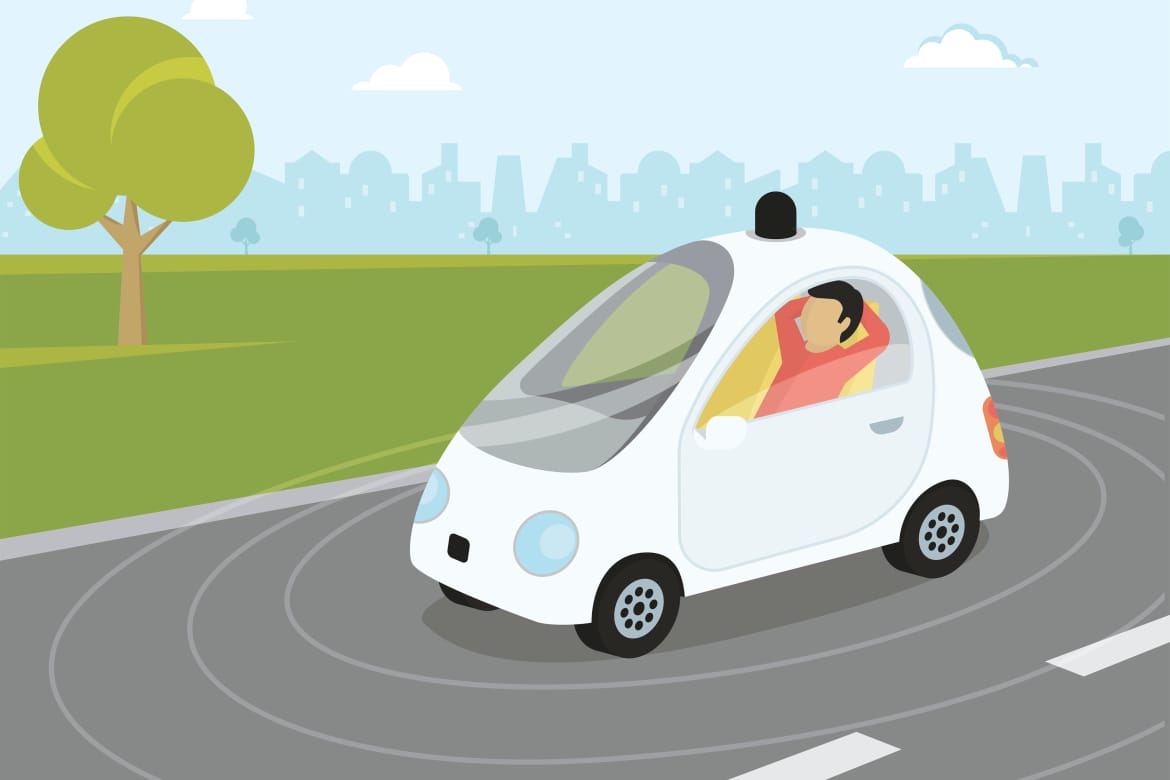Amazon is known for its relentless pursuit of innovation to constantly improve and upgrade its services for customers. For instance, just at the turn of the new year, it was revealed through a patent that the e-commerce giant planned to build flying warehouses for drone deliveries. In the latest, a new patent granted by the U.S. Patent and Trademark Office on January 17, 2017 reveals the company’s proposal to set up a highway network that can control self-driving cars navigating reversible lanes.
Amazon’s Plans May Herald A New Future For Autonomous Vehicles
Self-driving cars have been generally viewed as the next ground-breaking technology to revolutionize the future, but the discussion rarely veers to the real-life problems that come along with this new technology. Reversible lanes are commonly used in cities in the U.S. to ease congestion by changing the direction of traffic flow.
Drivers are notified of the change of direction through overhead signals and lights indicating the lanes that are open or closed to driving or turning. In case of autonomous vehicles, the question remains to be asked as- how a self-driving car would manage multiple incoming traffic in a lane at arbitrary times?

The new patent, filed by Amazon in November 2015, precisely deals with this seemingly complicated task of navigating reversible lanes that change direction on the basis of the bulk of the traffic flow.
According to the patent, self-driving cars ‘may not have information about reversible lanes when approaching a portion of a roadway that has reversible lane’, which would likely in a headlong crash into incoming traffic.
This would also mean that autonomous vehicles would not be able to optimize their routes by getting into the correct lane in advance- a trait regarded as a beneficial aspect in self-driving cars.
Amazon’s patent proposes a centralized roadway management system that will monitor reversible lanes and update their status to self-driving cars approaching the specific lane. This will help the vehicle know which lane will be the best option to drive in, thus helping coordinate large-scale vehicle movement. Following is a flowchart that explains how this will be carried out-
/cdn0.vox-cdn.com/uploads/chorus_asset/file/7821735/Screen_Shot_2017_01_17_at_9.38.03_AM.png)
Interest In V2I Technology Is Developing
Amazon’s proposed system is similar to the cloud platforms and vehicle-to-infrastructure (V2I) technology being developed by automakers through which vehicles can exchange traffic patterns, safety stats and other relevant information.
For instance, Audi made inroads into the new technology when it announced its Traffic Light Information system that uses traffic management center data to calculate how long a red or green light will last. It has been implemented only in certain areas around Nevada but nevertheless, it’s a start.
A similar idea for self-driving cars has been floated by Nissan through its Seamless Autonomous Mobility System. In this, there is a center manned by humans that guides autonomous vehicles to deal with uncommon situations e.g. a road that has been partially blocked by the police. Through experience, these vehicles learn via machine learning on how to respond to these issues, based on the solutions provided by humans.
A key difference between these technologies and Amazon’s patent is that the highway network would be owned and operated by Amazon and automakers would be able to benefit from the same.
Working On Autonomous Technology Is Key To Amazon’s Logistics Operations
Amazon has long been rumored to be working on autonomous technology that can enhance its in-house logistics operations and reduce dependence on manual labor and curbing operational costs (becomes even more important in view of a Trump administration implementing tighter immigrant controls, which would lead to a rise in labor costs).
In recent years, the online e-tailer has been gradually working to build its own delivery network- it purchased thousands of truck trailers in December to deliver goods between its warehouses, expansion of Amazon Logistics worldwide, targets for a cargo shipping network and of course, its Prime Air initiative, which is at the forefront of the company’s autonomous drone project.
Amazon acquired robotics firm Kiva Systems in 2012 to automate its distribution centers, so moving towards self-driving trucks and vans will be the next big step to boost its logistics division.
However, yet again, it remains to be seen whether Amazon actually works to implement this proposal or it will remain the queued idea folder for the near-term.














Leave a Reply